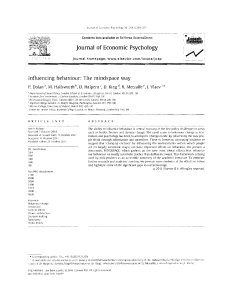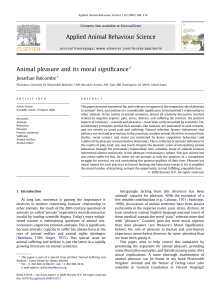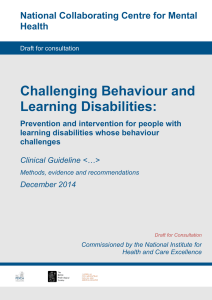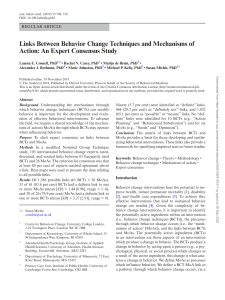transsexuality - Christian Medical Fellowship
Anuncio
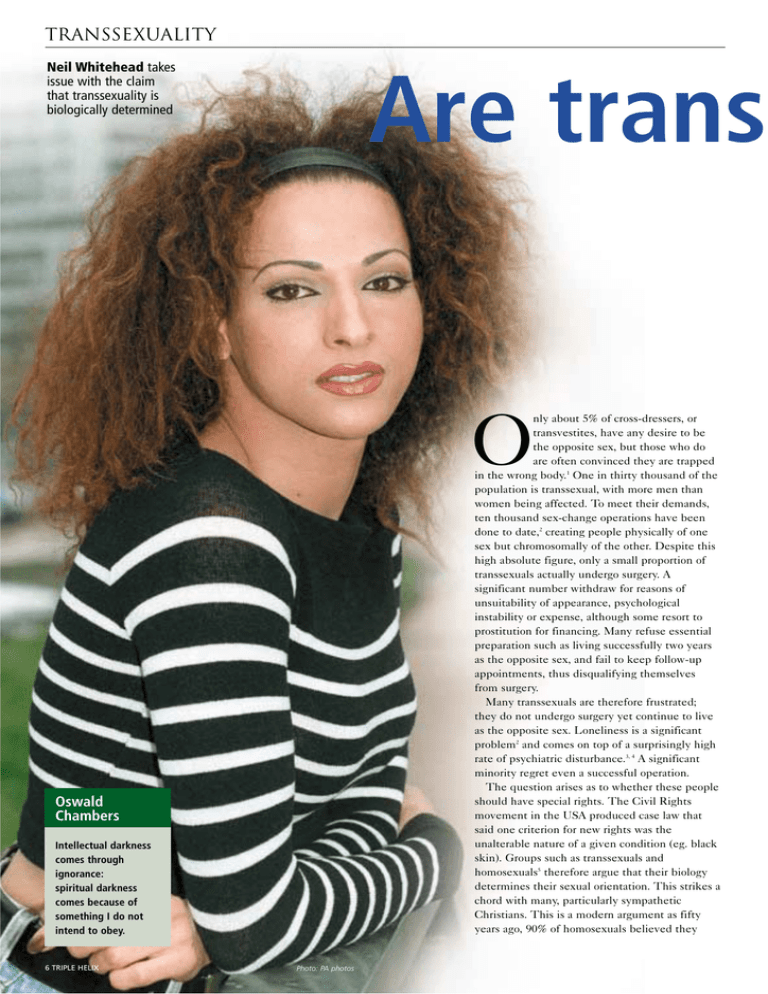
TRANssexuality Neil Whitehead takes issue with the claim that transsexuality is biologically determined Are trans O nly about 5% of cross-dressers, or transvestites, have any desire to be the opposite sex, but those who do are often convinced they are trapped in the wrong body.1 One in thirty thousand of the population is transsexual, with more men than women being affected. To meet their demands, ten thousand sex-change operations have been done to date,2 creating people physically of one sex but chromosomally of the other. Despite this high absolute figure, only a small proportion of transsexuals actually undergo surgery. A significant number withdraw for reasons of unsuitability of appearance, psychological instability or expense, although some resort to prostitution for financing. Many refuse essential preparation such as living successfully two years as the opposite sex, and fail to keep follow-up appointments, thus disqualifying themselves from surgery. Many transsexuals are therefore frustrated; they do not undergo surgery yet continue to live as the opposite sex. Loneliness is a significant problem2 and comes on top of a surprisingly high rate of psychiatric disturbance.3, 4 A significant minority regret even a successful operation. The question arises as to whether these people should have special rights. The Civil Rights movement in the USA produced case law that said one criterion for new rights was the unalterable nature of a given condition (eg. black skin). Groups such as transsexuals and homosexuals5 therefore argue that their biology determines their sexual orientation. This strikes a chord with many, particularly sympathetic Christians. This is a modern argument as fifty years ago, 90% of homosexuals believed they Oswald Chambers Intellectual darkness comes through ignorance: spiritual darkness comes because of something I do not intend to obey. 6 TRIPLE HELIX Photo: PA photos TRANssexuality sexuals born that way? As more studies are produced and misreported each year, so the gap between scientific thought and popular belief widens. Photo: PA photos were not born that way while today, most transsexuals think that their longing for sexchange is innate, biology-derived and unchangeable – a standpoint known as ‘determinism’. Biologists discarded behavioural determinism decades ago yet politicians and activists still cling to this theory. Even sociobiologists such as E.O Wilson deny determinism: ‘Scientists never speak of genes causing behaviour except as a kind of laboratory shorthand and they never mean it literally’. Downright maverick is the opinion of Richard Dawkins: ‘We are survival machines robot vehicles blindly programmed to preserve the selfish molecules known as genes’. Identical twin studies have been carried out to determine the degree of influence of genes on transsexual behaviour. Identical twins (virtually always) have identical genes so if genes directly cause sexual orientation, both twins should demonstrate the same orientation. Few twin studies on transsexual behaviour have been conducted, so studies on homosexual behaviour are examined. It has been shown that homosexual behaviour in co-twins is 50% or less. One small study6 on four monozygotic male twin pairs, one of whom was transsexual, showed only one pair to be concordant in transsexual behaviour. Genes do not, therefore, exclusively determine homosexual or transsexual behaviour, so we are not compelled to believe in determinism. Transsexuals (and homosexuals) argue that studies have shown that their brain microstructure is more feminine.7, 8 While it is difficult to determine whether brain structure in a particular person is produced by or influences their behaviour, the most unequivocal evidence is that structures are produced by long-continued behaviour. It is known that the brain changes physically in response to our behaviour – London taxi drivers, for example, have an enlarged part of the brain dealing with navigation! Transsexual brain differences are therefore more likely to be the result of transsexual behaviour, rather than its cause. Studies on enzymic and hormonal abnormalities, physical dexterity, auditory phenomena and psychological profiles of transsexuals have also been carried out.9, 10 There is little consistency between the studies, they are poorly replicable and only demonstrate minor links between sexual behaviour and the variables studied. Physiological differences cannot therefore be claimed to determine or even influence sexual orientation. Many transsexuals (and homosexuals) showed childhood gender non-conformity with boys displaying girlish behaviour and girls acting as tomboys.11 Only a small minority of these children become homosexual or lesbian, and a much smaller proportion become transsexual. Early sexual experience or distant fathers may be a factor in the development of sexual orientation in some boys, but only a minority progress to adult homosexuality, let alone transsexuality. Unfortunately, the language used by the media to describe homosexuality and transsexuality often appears to support determinism. A scientific study which suggests a correlation or link between transsexual or homosexual behaviour and brain structure or hormones, for example, is reported as showing that these behaviours have a ‘biological basis’ or are ‘genetic’ or ‘due to hormones’. The actual strength of the correlation is rarely mentioned. As more of these studies are produced and misreported each year, so the gap between KEY POINTS ost transsexuals believe M that their longing for sex- change is biologically determined. However there is no real evidence for a biological basis for transsexuality in terms of measurable differences in genes, brain microstructure or physiology. Like homosexuality, transsexuality appears to be the result of a complex interaction between biology, social environment and personal choice. Relationships between the sexes are intended to mirror that between Christ and his bride, the church. Transsexuality is therefore wrong; but the Christian response should not be judgement, but rather love and compassion, providing the means and support for a change in behaviour. TRIPLE HELIX 7 TRANssexuality Albert Einstein Science without religion is lame. Religion without science is blind. Transsexual Rights Men and women who have undergone sexchange operations may be allowed to marry and adopt children under new proposals drawn up by Home Office Ministers. It is curently illegal for Britain’s 5,000 transsexuals to have their original sex altered on their birth certificate. However last year they won the right under the Sex Discrimination Act to have their new gender recorded on passports and driving licenses; and also to have sex change operations on the NHS. Civil liberties groups claim that Britain is out of step with the rest of Europe where, with the exception of Andorra, Albania and Ireland, transsexuals are not prevented from marrying. The Evangelical Alliance is opposed to any change in the law. The issue hit the headlines in June this year when the Bishop of Bristol, Barry Rogerson, gave his blessing to a vicar having a sex change operation. (Daily Telegraph 2000; 22 July) 8 TRIPLE HELIX scientific thought and popular belief widens. There is thus no evidence for the political case that transsexualism is an unalterable condition and therefore there is no basis for special civil rights to be granted to transsexuals. Behaviour genetics, for all its faults, has established that all behaviours are a mixture of genes, family environment, unique circumstances, and individual choice. No one forces us into a given behaviour. The influence of each factor may be alterable; for example the contribution of genes may be minimised by more intervention from the environment. It may become clear with time to an individual that his will can be used to support genetic tendencies or fight against them. Sexual orientation may be established in adolescence and people may make such lifestyle and belief changes that they come to believe that they were born that way. It is these individuals in particular who come to the attention of clinicians, yet this sample is highly biased and gives the false impression that all transsexual behaviour is equally entrenched and difficult to alter. What should the Christian response to this difficult area be? I suggest that the ideal for a Christian in the medical profession is that any behaviour or practice should be done ‘on earth as it is in heaven’.12 Relationships between the sexes are supposed to mirror the relationship between Christ and his perfected bride. It must therefore be asked whether a particular sexual activity mirrors the final glorious and pure relationship found at the marriage supper of the Lamb. Divorce is inappropriate for a Christian because Jesus will never divorce his bride. Homosexuality (however loving it may be) is wrong because it does not reflect the relationship. Transsexuality is wrong because it tries to alter the pattern. As Christians, however, we must be careful not to condemn a particular wrong in others. We are all wrong-doers very much in need of God’s daily grace, help and forgiveness in our lives to enable us to become more like Christ. Jesus condemned the Pharisees, ‘They tie up heavy loads and put them on men’s shoulders, but they themselves are not willing to lift a finger to move them’.13 We as Christians should show love and compassion towards transsexuals and provide the means and support for a change in behaviour. For a Christian transsexual, at least, this ideal must be slowly and gently presented, preferably with personal testimony from those who have reached it. Skilled psychotherapeutic help is often needed. In the USA I know of one such specialist transsexual Christian counselling ministry. For the non-Christian transsexual, however, change in behaviour is still possible, although it may not be deemed necessary and may even be discouraged in today’s Western culture. So is it possible to change? Definitely. I have personally met some who have slowly lost their lonely longing. It is possible to come to believe that God has made us physically, and intends that we are fulfilled as he made us. It is possible to lose desire to become a member of the opposite sex, and then to marry. It is possible to find fulfilment, particularly in Jesus, and to believe that problems here on Earth are negligible compared with the future glory. It is possible with God’s help to become the people God wants us to be. Following an interdisciplinary PhD (which included biochemistry) Neil Whitehead (whiteh@iconz.co.nz) worked for the NZ Government and United Nations for 27 years. He is presently a scientific consultant with an interest in the psychological sciences. References 1 2 3 4 5 Docter R F, Prince V. Transvestism: a survey of 1032 cross-dressers. Archives of Sexual Behavior 1997; 26: 589-605 Israel G, Tarver D E. Transgender Care. Philadelphia: Temple University Press, 1997 Rekers G A. Gender Identity Disorder. Rekers G A, Oakes J S, Gay J. (Eds.) The Journal of Human Sexuality. Carrollton, Texas: Lewis and Stanley 1996; 11-20 Cole C M, O’Boyle M, Emory L E, Meyer W J. Comorbidity of gender dysphoria and other major psychiatric diagnoses. Archives of Sexual Behavior 1997; 26:13-26 Whitehead N E, Whitehead B K. My Genes Made Me Do It! 6 7 8 9 Layfayette, Louisiana: Huntington House 1999. For reviews and other information see mygenes.co.nz Buhrich N, Bailey J M, Martin N G. Sexual orientation, sexual identity, and sex-dimorphic behaviors in male twins. Behavior Genetics 1991; 21: 75-96 Gorman C. Trapped in the body of a man? Time 1995; 66-67 Zhou J N, Hofman M A, Gooren L J G, Swaab D F. A sex difference in the human brain and its relation to transsexuality. Nature 1995; 378: 68-70 Dörner G, Poppe I, Stahl F, Kölzi J, & Übelhack R. Gene- and environment-dependent neuroendocrine etiogenesis of 10 11 12 13 homosexuality and transsexualism. Experimental and Clinical Endocrinology, 1991; 98:141-150 Bosinski H A, Peter M, Bonatz G, Arndt R, Heidenreich M, Siffell N G, Wille R. A higher rate of hyperandrogenic disorders in female to male transsexuals. Psychoneuroendocrinology 1997; 22:361-380 Zucker K J, Bradley S J. Gender Identity Disorder and Psychosexual Problems in Children and Adolescents. New York: Guilford Press, 1995 Matthew 6:10b Matthew 23:4



